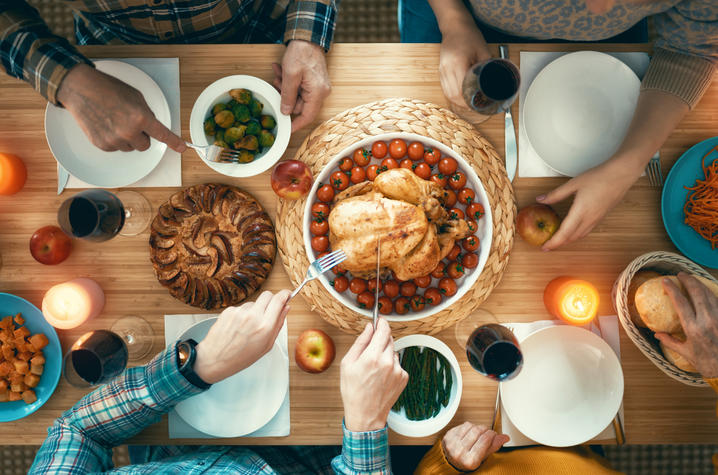What to Know about Safely Storing Thanksgiving Leftovers

The University of Kentucky Public Relations & Strategic Communications Office provides a weekly health column available for use and reprint by news media. This week's column is by Dr. Sandra Bastin, professor in the Department of Dietetics and Human Nutrition in the UK College of Agriculture, Food and Environment.
LEXINGTON, Ky. (Nov. 23, 2020) – The Thanksgiving feast is a beloved tradition in our country, followed closely by another tradition – eating leftovers for days.
But leftovers are best enjoyed when they’ve been stored safely. Follow these tips from the USDA to keep your food fresh and your family healthy.
- Leftovers should be stored within two hours of cooking. Divide turkey and casseroles into shallow dishes to cool them quickly. If the dish is too large or too deep, it won’t cool as quickly and provides the perfect environment for bacteria to multiply.
- It’s not necessary to bring your leftovers to room temperature first. Newer refrigerators can cool food very quickly as long it’s stored in those shallow containers. Bacteria thrive between 40- and 140-degrees Fahrenheit, so it’s important to get those leftovers chilled quickly.
- Your leftovers’ days are numbered. The rule of thumb is that leftovers can be safely kept in the refrigerator for three to four days. If you haven’t eaten it by the Monday after Thanksgiving, toss it.
- Freeze now, enjoy later. If you have more food leftover than you can eat by Monday, you can freeze it for up to six months. Wrap your food tightly in foil and freeze it in a plastic container.
When it’s time to reheat, temperature is everything. Bring your food up to a safe temperature to kill any lingering bacteria.
- Boil liquids. Bring sauces, soups and gravy to a rolling boil.
- Microwave thoroughly. Microwaves are notorious for not heating evenly. Cover your food in a microwave-safe dish and vent to let steam escape. The steam will create a moist heat to help kill bacteria and heat food evenly.
- Check the temperature. Use a food thermometer to make sure your leftovers are heated to 165 degrees – the USDA recommended temperature.
- Get the app. The USDA has an app called Foodkeeper that has guidelines for storing and preparing hundreds of foods. You also can use it to set reminders to know when to throw leftovers out.
As the state’s flagship, land-grant institution, the University of Kentucky exists to advance the Commonwealth. We do that by preparing the next generation of leaders — placing students at the heart of everything we do — and transforming the lives of Kentuckians through education, research and creative work, service and health care. We pride ourselves on being a catalyst for breakthroughs and a force for healing, a place where ingenuity unfolds. It's all made possible by our people — visionaries, disruptors and pioneers — who make up 200 academic programs, a $476.5 million research and development enterprise and a world-class medical center, all on one campus.




